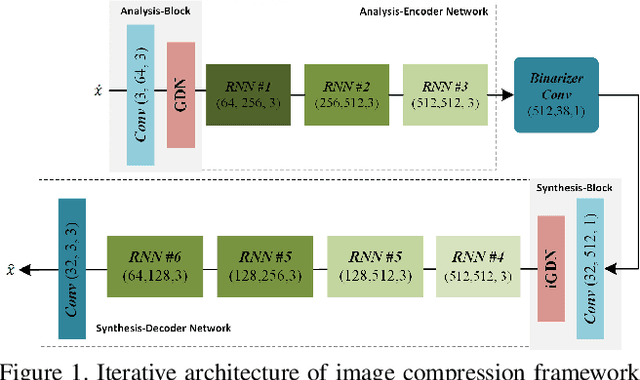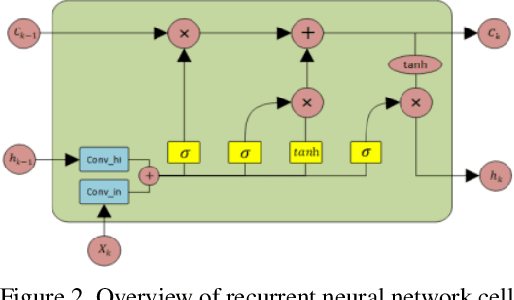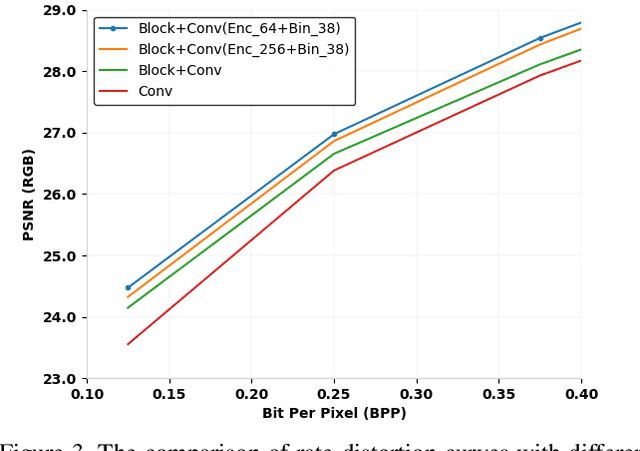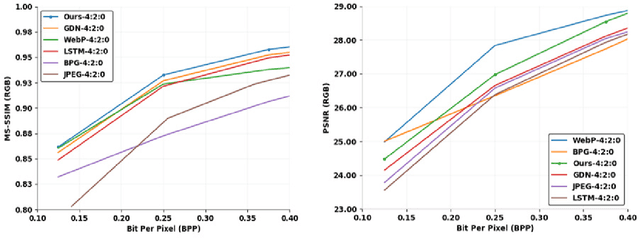Hyeonjoon Moon
Image Compression with Recurrent Neural Network and Generalized Divisive Normalization
Sep 05, 2021



Abstract:Image compression is a method to remove spatial redundancy between adjacent pixels and reconstruct a high-quality image. In the past few years, deep learning has gained huge attention from the research community and produced promising image reconstruction results. Therefore, recent methods focused on developing deeper and more complex networks, which significantly increased network complexity. In this paper, two effective novel blocks are developed: analysis and synthesis block that employs the convolution layer and Generalized Divisive Normalization (GDN) in the variable-rate encoder and decoder side. Our network utilizes a pixel RNN approach for quantization. Furthermore, to improve the whole network, we encode a residual image using LSTM cells to reduce unnecessary information. Experimental results demonstrated that the proposed variable-rate framework with novel blocks outperforms existing methods and standard image codecs, such as George's ~\cite{002} and JPEG in terms of image similarity. The project page along with code and models are available at https://khawar512.github.io/cvpr/
Automatic Radish Wilt Detection Using Image Processing Based Techniques and Machine Learning Algorithm
Sep 01, 2020



Abstract:Image processing, computer vision, and pattern recognition have been playing a vital role in diverse agricultural applications, such as species detection, recognition, classification, identification, plant growth stages, plant disease detection, and many more. On the other hand, there is a growing need to capture high resolution images using unmanned aerial vehicles (UAV) and to develop better algorithms in order to find highly accurate and to the point results. In this paper, we propose a segmentation and extraction-based technique to detect fusarium wilt in radish crops. Recent wilt detection algorithms are either based on image processing techniques or conventional machine learning algorithms. However, our methodology is based on a hybrid algorithm, which combines image processing and machine learning. First, the crop image is divided into three segments, which include viz., healthy vegetation, ground and packing material. Based on the HSV decision tree algorithm, all the three segments are segregated from the image. Second, the extracted segments are summed together into an empty canvas of the same resolution as the image and one new image is produced. Third, this new image is compared with the original image, and a final noisy image, which contains traces of wilt is extracted. Finally, a k-means algorithm is applied to eliminate the noise and to extract the accurate wilt from it. Moreover, the extracted wilt is mapped on the original image using the contouring method. The proposed combination of algorithms detects the wilt appropriately, which surpasses the traditional practice of separately using the image processing techniques or machine learning.
 Add to Chrome
Add to Chrome Add to Firefox
Add to Firefox Add to Edge
Add to Edge